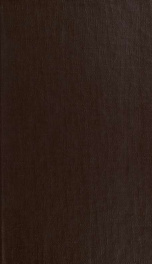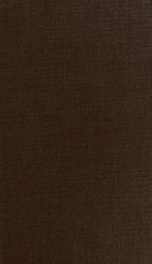Large Upper Devonian arthrodires from Iran Fieldiana, Geology, Vol.23, No.5

From the Upper Devonian of East Iran, fossil remains of three genera of brachythoracid arthrodires are described: Eastmanosteus sp., Holonema rugosum (Claypole), and Aspidichthys ingens (Koenen). This occurrence extends the range of distribution of the three genera, but like all others known is situated within the "tropics" of the Devonian. In Eastmanosteus, the levator capitis muscle attaches on both sides of the posteromedian cusp of the nuchal plate. The double sockets on the ventral surface of the nuchal plate run upward and backward so that they are interpreted as grooves for the craniospinal process of the neural endocranium in accordance with Stetson (1930). On the posterior dorsolateral plate of Aspidichthys the main lateral line canal turns postero-ventrally and no canal passes onto the median dorsal plate Includes bibliographical references (p. 76-78) From the Upper Devonian of East Iran, fossil remains of three genera of brachythoracid arthrodires are described: Eastmanosteus sp., Holonema rugosum (Claypole), and Aspidichthys ingens (Koenen). This occurrence extends the range of distribution of the three genera, but like all others known is situated within the "tropics" of the Devonian. In Eastmanosteus, the levator capitis muscle attaches on both sides of the posteromedian cusp of the nuchal plate. The double sockets on the ventral surface of the nuchal plate run upward and backward so that they are interpreted as grooves for the craniospinal process of the neural endocranium in accordance with Stetson (1930). On the posterior dorsolateral plate of Aspidichthys the main lateral line canal turns postero-ventrally and no canal passes onto the median dorsal plate Fieldiana series has been published as Geological Series by Field Columbian Museum (1895-1909) and Field Museum of Natural History (1909-1943), and as Fieldiana: Geology by Chicago Natural History Museum (1945-1966) and Field Museum of Natural History (1966-)
Info about the book
Author:
Series:
Unknown
ISBN:
0471384615
Rating:
3.5/5 (2)Your rating:
0/5
Languge:
English
Users who have this book
Users who want this book
What readers are saying
What do you think? Write your own comment on this book!
write a commentif you like Large Upper Devonian arthrodires from Iran Fieldiana, Geology, Vol.23, No.5 try:
Do you want to exchange books? It’s EASY!
Get registered and find other users who want to give their favourite books to good hands!


